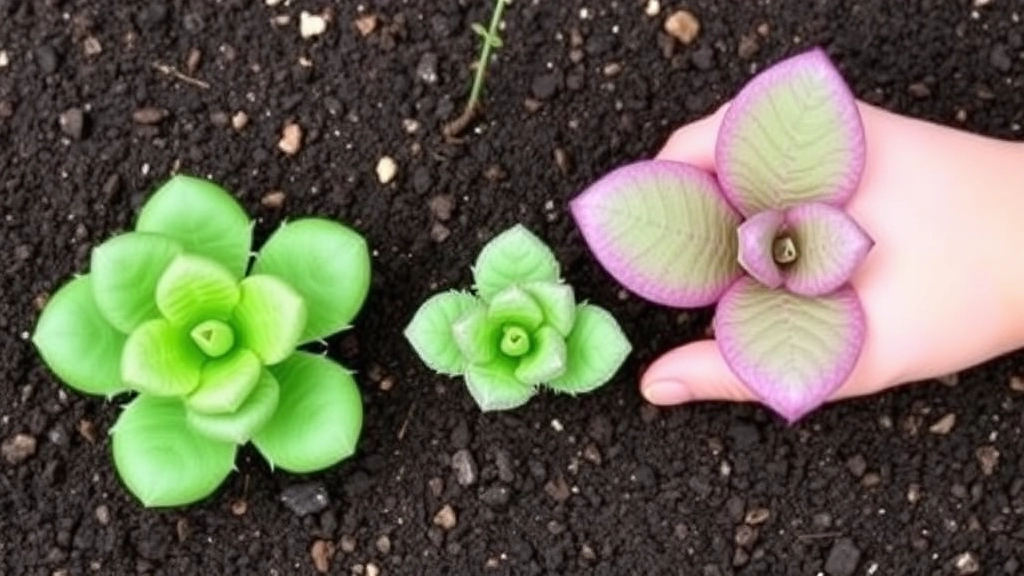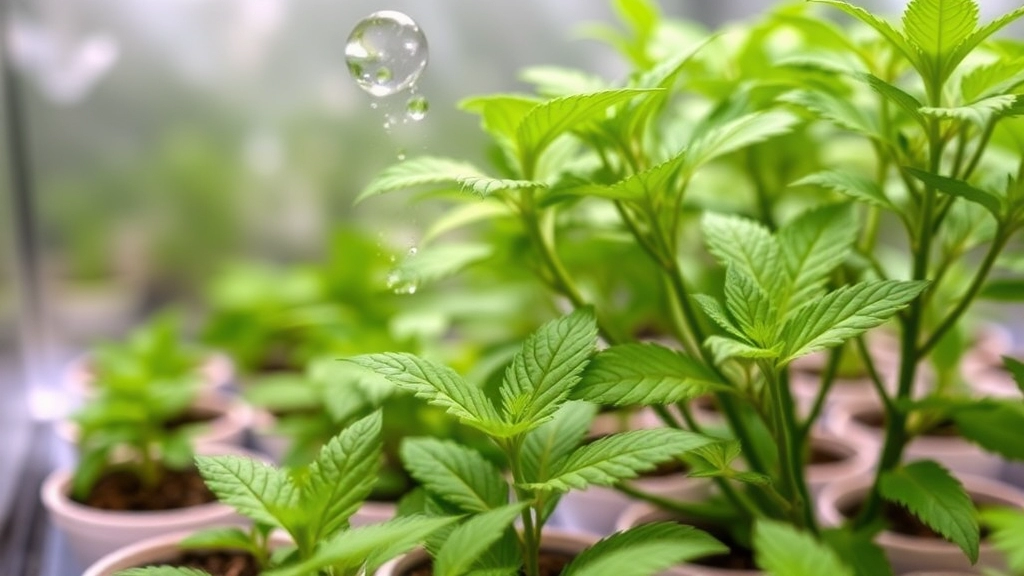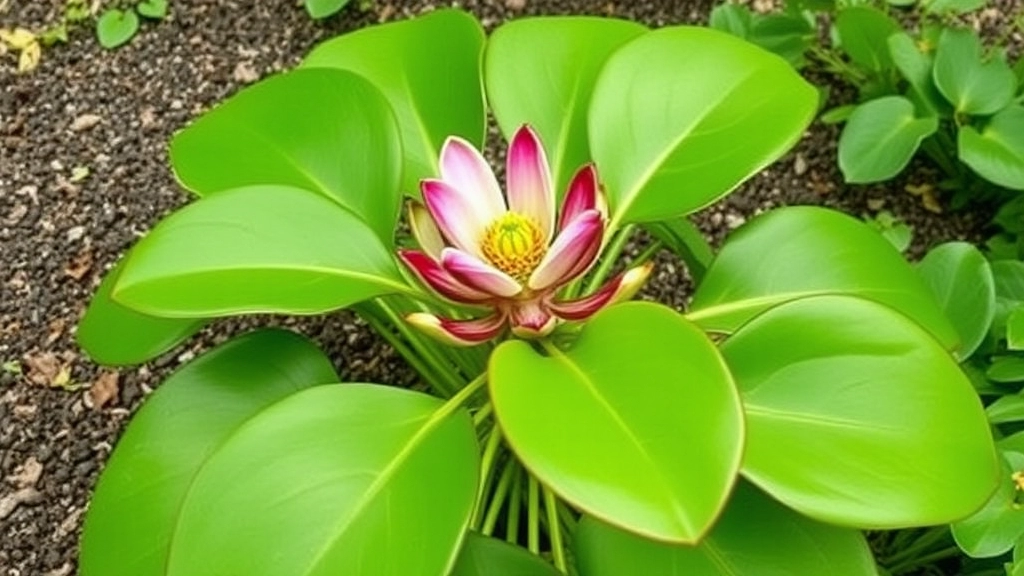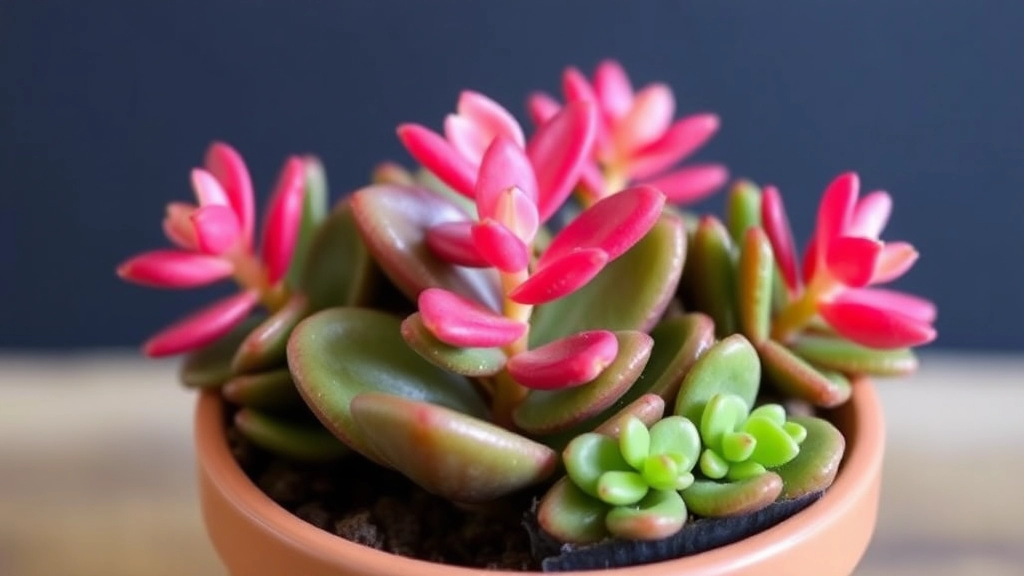Kalanchoe Paddle Plant Care
When it comes to Kalanchoe Paddle Plant care, the key is understanding its unique needs. This succulent thrives in bright, indirect light, making it perfect for sunny windowsills. Ensure the soil is well-draining to prevent root rot, a common issue with overwatering. A cactus or succulent potting mix works wonders.
Watering should be done sparingly; let the soil dry out completely between waterings. These plants prefer warmer climates but can tolerate cooler temperatures if kept dry. Fertilize sparingly during the growing season and keep an eye out for common pests like aphids and mealybugs. With the right care, your paddle plant will flourish, adding a touch of greenery to your space.
Optimal Light Conditions for Paddle Plants
Are you struggling to keep your Kalanchoe paddle plant thriving? One of the most crucial factors to consider is light.
Paddle plants, also known as Kalanchoe luciae, flourish in bright, indirect sunlight. Here’s what you need to know:
Best Soil and Potting Mix for Paddle Plants

So, you’ve got your Paddle Plant, and now you’re wondering, “What’s the best soil for it?” You’re not alone! Choosing the right soil mix can make all the difference in keeping your plant happy and thriving.
Why Soil Matters
The right soil provides essential nutrients, drainage, and aeration. Paddle Plants, or Kalanchoe, prefer well-draining soil to avoid root rot.
Ideal Soil Mix
Here’s what I recommend for your Paddle Plant:
- Cactus or Succulent Mix: These mixes are specifically designed for plants that need excellent drainage.
- DIY Mix: If you’re feeling adventurous, you can create your own by mixing:
- 50% potting soil
- 25% perlite or pumice
- 25% sand
This combo ensures your plant gets the nutrients it needs while keeping the roots dry.
Potting Tips
- Choose the Right Pot: Ensure it has drainage holes. This prevents water from pooling at the bottom.
- Repotting: If your Paddle Plant outgrows its pot, repot it in spring. This gives it a fresh start with new soil.
Watering Schedule and Tips for Kalanchoe Paddle Plant
When it comes to nurturing your Kalanchoe paddle plant, one of the most pressing concerns is often watering. Overwatering or underwatering can lead to serious issues, so let’s dive into the best practices to keep your plant thriving.
Understanding Water Needs
Kalanchoe paddle plants prefer a moderate watering schedule. The key is to allow the soil to dry out between waterings. Here’s a simple guide to follow:
- Frequency: Water every 2-3 weeks, depending on the season and humidity levels.
- Check the Soil: Stick your finger about an inch into the soil. If it feels dry, it’s time to water.
- Watering Method: When you do water, ensure you do so thoroughly. Water until it drains out of the bottom of the pot, but avoid letting the plant sit in standing water.
Tips for Effective Watering
- Use Well-Draining Soil: This prevents water from pooling around the roots.
- Consider the Season: In summer, you may need to water more frequently due to increased evaporation. In winter, reduce watering to avoid root rot.
- Humidity Matters: If your home is particularly dry, you might need to adjust your schedule slightly to accommodate.
Signs of Overwatering or Underwatering
- Overwatering: Yellowing leaves, mushy stems, or a foul smell from the soil.
- Underwatering: Wrinkled leaves and a generally droopy appearance.
By paying close attention to these signs, you can adjust your watering schedule accordingly. For more detailed care information, you might find this guide on growing and caring for Kalanchoe paddle plants helpful. Additionally, if you’re interested in other varieties, check out this Kalanchoe succulent identification guide.
Ideal Temperature and Humidity for Healthy Growth

When nurturing your Kalanchoe paddle plant, understanding the ideal temperature and humidity is crucial for its overall health. Many plant enthusiasts often worry about providing the right environment, and it’s a valid concern.
Temperature
Kalanchoe paddle plants thrive in warm conditions.
- Optimal Range: Aim for temperatures between 20°C to 30°C (68°F to 86°F) during the day.
- Nighttime: At night, temperatures can drop to around 15°C to 18°C (59°F to 64°F) but avoid anything lower.
Extreme cold can stress the plant, leading to wilting or even death.
Humidity
Humidity levels play a significant role in the paddle plant’s growth.
- Ideal Humidity: Kalanchoe paddle plants prefer a humidity level around 40% to 60%.
- Dry Conditions: They can tolerate lower humidity, but prolonged dry air can lead to issues like leaf drop.
Tips for Maintaining Temperature and Humidity
- Location: Place your paddle plant in a bright, warm spot, away from cold drafts.
- Heat Sources: Avoid placing it near radiators or heaters that can cause temperature spikes.
- Humidity Boost: If your home is dry, consider using a humidifier or placing a tray of water near the plant to increase moisture levels.
Fertilization: How Often and What Type to Use
As we explore the essentials of caring for your Kalanchoe paddle plant, understanding fertilization is crucial for promoting vibrant growth and health.
Pruning and Propagating Paddle Plants

So, you’ve got your Paddle Plant thriving, but have you thought about pruning and propagating it?
Why Prune?
Pruning isn’t just for aesthetics; it helps your plant grow stronger and healthier.
- Remove Dead Leaves: Snip away any yellow or dead leaves to prevent disease.
- Shape It Up: If your Paddle Plant is getting leggy, a little trim can encourage bushier growth.
- Encourage New Growth: Cutting back can stimulate fresh, vibrant leaves.
When to Prune?
The best time to prune is during the growing season, typically in spring or early summer. This way, your plant can bounce back quickly.
Propagation Made Easy
Want more Paddle Plants? Propagation is a fun and rewarding way to expand your collection.
- Leaf Cuttings:
- Choose a healthy leaf.
- Let it dry for a day or two to form a callus.
- Place it in well-draining soil and water sparingly.
- Offsets:
- Look for baby plants at the base of the parent.
- Gently twist or cut them off.
- Replant them in their own pots.
Tips for Successful Propagation:
- Use clean tools to avoid infections.
- Keep the new plants in bright, indirect light.
- Water lightly until they establish roots.
Pruning and propagating not only keeps your Paddle Plant in tip-top shape but also gives you the chance to share the love with friends or expand your indoor garden.
As we focus on nurturing our Paddle Plants, it’s crucial to address the common pests and diseases that can threaten their health.
### Identifying Common Pests
Paddle Plants, or Kalanchoe, are generally resilient but can attract a few unwelcome guests. Here are the most common pests to watch for:
– **Mealybugs**: These small, white, cotton-like pests often hide in leaf joints.
– **Spider Mites**: Tiny and difficult to see, they create fine webbing on the leaves.
– **Aphids**: Small and green, they can cluster on new growth, sucking the sap.
### Preventing Pests
Prevention is always better than cure. Here are some tips to keep pests at bay:
– **Regular Inspections**: Check your plants weekly for any signs of pests.
– **Clean Leaves**: Wipe leaves with a damp cloth to remove dust and potential pests.
– **Good Air Circulation**: Ensure your plants are not overcrowded to promote airflow.
### Dealing with Pests
If you do encounter pests, here’s how to tackle them:
– **Neem Oil**: A natural pesticide that can be sprayed on affected areas.
– **Insecticidal Soap**: Effective against soft-bodied insects like aphids and mealybugs.
– **Manual Removal**: For larger pests, simply wipe them off with a cotton swab dipped in alcohol.
### Common Diseases
In addition to pests, Paddle Plants can suffer from diseases, often stemming from improper care. The most frequent issues include:
– **Root Rot**: Caused by overwatering, leading to mushy roots.
– **Leaf Spot**: Fungal infections that present as dark spots on leaves.
### Preventing Diseases
To maintain the health of your Paddle Plants, consider these preventative measures:
– **Proper Watering**: Allow the soil to dry out between waterings.
– **Well-Draining Soil**: Use a potting mix designed for succulents to prevent water retention.
– **Avoid Overcrowding**: Ensure plants have enough space to breathe.
### Treating Diseases
If your Paddle Plant does fall ill, here’s how to address it:
– **Repotting**: If root rot is suspected, remove the plant from its pot, trim affected roots, and [repot in fresh soil](https://planthq.org/how-to-plant-kalanchoe-stepbystep-guide/).
– **Fungicide**: For leaf spot, apply a fungicide as per the instructions on the label.
By staying vigilant and taking proactive steps, you can keep your Paddle Plants thriving and free from pests and diseases. For more detailed care tips, you might find this [ultimate guide to growing and caring for succulent plant Kalanchoe](https://planthq.org/ultimate-guide-to-growing-and-caring-for-succulent-plant-kalanchoe/) useful.
Seasonal Care Tips: Adjusting for Winter and Summer
Are you wondering how to keep your Kalanchoe paddle plant thriving through the changing seasons?
Seasonal changes can be a bit tricky for our leafy friends.
Summer Care Tips:
- Light: Your paddle plant loves the sun! In summer, place it in bright, indirect light. Too much direct sunlight can scorch those lovely leaves.
- Watering: During the hotter months, increase your watering. Check if the top inch of soil is dry before giving it a drink.
- Humidity: Paddle plants enjoy a bit of humidity, so if your home is dry, consider misting it occasionally.
- Fertilization: Feed your plant with a balanced, water-soluble fertilizer every 4-6 weeks. This helps it thrive during its active growing season.
Winter Care Tips:
- Light: As the days get shorter, make sure your paddle plant still gets enough light. If possible, move it closer to a window where it can soak up those winter rays.
- Watering: Cut back on watering in winter. The plant goes dormant, so let the soil dry out more between waterings.
- Temperature: Keep your paddle plant in a warm spot, ideally between 15-22°C. Avoid cold drafts; they don’t like sudden temperature changes.
- Humidity: Winter air can be dry, but avoid misting too much. Instead, consider placing a small humidifier nearby or a pebble tray with water to maintain humidity levels.
For more detailed guidance on caring for your Kalanchoe plants, check out our complete care guide for Kalanchoe Blossfeldiana.
If you’re interested in propagation techniques, our Kalanchoe Tomentosa propagation guide provides step-by-step tips.
FAQs on Kalanchoe Paddle Plant Care
What is the best soil mix for Kalanchoe Paddle Plants?
The best soil mix for Kalanchoe Paddle Plants is a well-draining one. You can use a cactus or succulent mix, or create a DIY mix with 50% potting soil, 25% perlite or pumice, and 25% sand.
Why is well-draining soil important for Paddle Plants?
Well-draining soil is crucial because it prevents root rot by ensuring that water does not pool around the plant’s roots.
What type of pot should I use for my Paddle Plant?
Choose a pot with drainage holes to prevent water from accumulating at the bottom, which can lead to root rot.
When should I repot my Paddle Plant?
Repot your Paddle Plant in the spring if it has outgrown its current pot. This gives it a fresh start with new soil.
What is the ideal temperature range for Paddle Plants?
Paddle Plants thrive in temperatures between 20°C to 30°C (68°F to 86°F) during the day and can tolerate nighttime temperatures of 15°C to 18°C (59°F to 64°F).
How much humidity do Paddle Plants need?
Paddle Plants prefer a humidity level of around 40% to 60%. They can tolerate lower humidity but may experience leaf drop in prolonged dry conditions.
How can I maintain the ideal temperature and humidity for my Paddle Plant?
Place your Paddle Plant in a bright, warm spot away from cold drafts and heat sources. If your home is dry, use a humidifier or place a tray of water near the plant to increase moisture levels.
Why should I prune my Paddle Plant?
Pruning helps remove dead leaves, shape the plant, and encourage new growth, making your Paddle Plant stronger and healthier.
When is the best time to prune my Paddle Plant?
The best time to prune is during the growing season, typically in spring or early summer, to ensure quick recovery.
How can I propagate my Paddle Plant?
You can propagate Paddle Plants through leaf cuttings or offsets. For leaf cuttings, choose a healthy leaf, let it dry to form a callus, and then place it in well-draining soil. For offsets, gently twist or cut baby plants from the base of the parent and replant them in their own pots.
What are some tips for successful propagation?
Use clean tools to avoid infections, keep new plants in bright, indirect light, and water lightly until they establish roots.
Can I share my propagated Paddle Plants?
Yes, propagating Paddle Plants allows you to share them with friends or expand your indoor garden.
References
-
Growing Paddle Plant (Kalanchoe thyrsiflora) Indoors
-
Kalanchoe Paddle Plant Care: How To Grow A Paddle Plant
-
Kalanchoe: How to Grow and Care for Kalanchoe Plants
